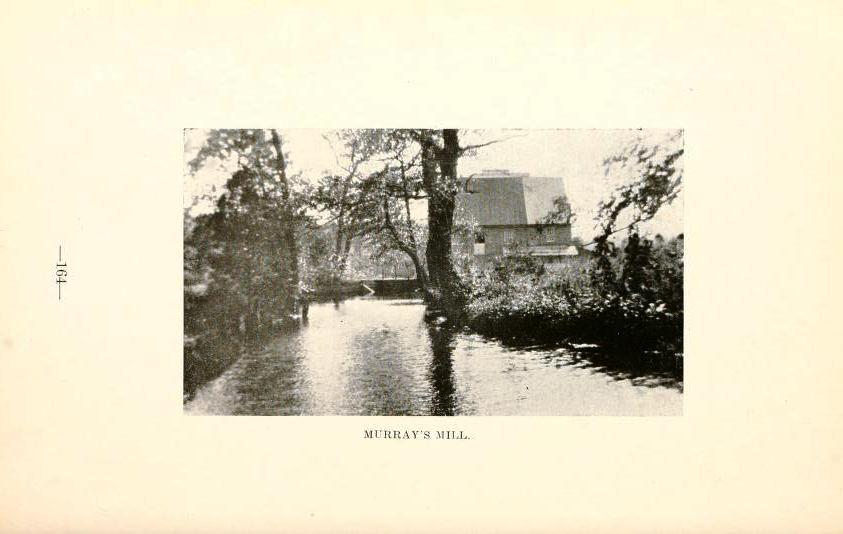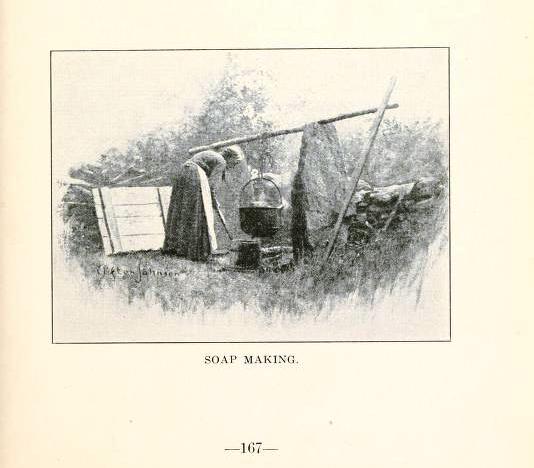The History of Caroline County, Maryland, From Its Beginning
Early Factories

As soon as a community was formed in early Maryland, a grist mill made
its appearance, and these were the first manufacturing plants of the
Colony. The early settlers could make or import their clothing and
furniture, prepare their food locally, but a necessary part to every
establishment was an old grist mill, on the bank of a stream which
furnished power to turn its wheels.
Of these early mills, Caroline County
had its share and most of them are standing today, so well constructed
were they, being chiefly made of brick.
Murray's Mill at Linchester is
probably one of the first built and best known. Before the
Revolutionary War this mill which had been established, perhaps, as
early as 1670, belonged to
Col. Jas. Murray and during the
Revolutionary War ground flour for the soldiers. Though rebuilt at
various times, a portion of the original structure still stands.
Records show a lease of the Mill at
Potter's Landing (Williston) in 1778 made between Nathaniel
Potter and James White, both of
this county. A part of the lease is here given:
Nathaniel Potter "Doth grant and let .................. that Mill, on the head of the Cokiases Creek, together with four acres of land, lying convenient to the said Mill, with liberty of timber for use of said Mill, and dwelling house now built on said land, to have and to hold the said Mill and four acres of land, for and during the term of twelve years and every year therefore shall pay the full and just sum of 7£ 10s common circulating currency, and to grind the said Potter's grain, toll and hopper free, and boult (sift) the same for the use of his family; the aforesaid to be paid yearly on the first day of January and the said Mill and appurtenances thereon to be left in sufficient grinding repair."This mill seems to have been rebuilt by Gen. Wm. Potter on a large scale which included the building of a heavy dam (now the state road) and the providing of a ship channel up to the mill. This mill still operates and is owned by W. C. Todd.
The Brick Mill along the Choptank about three miles north of Denton was probably built by either Thomas Hardcastle or John, his son, both of these men being great builders. The landing at this place was also well known in the early times, as it marked the turning point of boats in the river and served as a shipping center for a large territory roundabout. This mill was destroyed some years ago but the old brick house nearby still remains.
Mills, some of them brick and still standing, were early established as follows: Bloomery Mill near Smithville; Fowling Creek (lower down the stream than the present site); Hog Creek, Anthony's Mill, Driver's Mill (now the water power plant of the Electric Lighting Co.), Nichols Mill (Knott's Mill near Hillsboro), Bradley's (now known as Crouse's), a mill at Old Town Branch which in 1782 was owned by Thomas Goldsborough.
Only a few years later appeared the up-and-down saw mill, several of which were located in the county on small water courses. These held sway for many years until supplanted a generation or two ago by steam saw mills.
Tanneries were also quite numerous in the rural sections before 1830. The art of tanning had been introduced into America as early as 1630, the old process of using bark and lime being, of course, in general use.
There were several reasons for the early growth of this industry--the great cost of imported leather, large quantity of cattle and hides, and cheapness of labor.
While the process of tanning was very slow, the quality of the leather produced was much superior for endurance than is the product of our modern manufactures where hides may be changed into so-called leather within 24 hours.
As is to be expected, there was a tannery located in nearly every trading center of the county at that time as at Greensboro, Hillsboro, Potter's Landing, near Hunting Creek, and the North West Fork.
Some iron ore had been found in the county as early as 1780 and this together with the State law which encouraged the establishing of iron foundries, led to the starting of at least two plants in Caroline County.
The Douglass brothers, who came from England about 1780 and located near Smithville, constructed the first foundry, perhaps. One of these men had learned the trade of iron master in his home country, which largely accounts for his undertaking here, no doubt. It seems likely that this plant was not continued very long on account of the poor quality of any ore that may have been found.
Very early, too, in the county some plow factories were erected--the more important ones, perhaps, being the one in Denton as described elsewhere and one near Beartown an early settlement located in the vicinity of Mt. Zion.
Crude as must have been the products of these early enterprises when the metal parts of plows were probably moulded as one single piece of cast iron, this implement was much superior to the earlier plows and paved the way for the modern forms of plow machinery.
Carding wool for spinning, all of which had been heretofore done by hand in the home was given a fresh impetus when a machine for such a purpose was constructed at Anthony's Mill near Denton, the same to be operated by water power.
